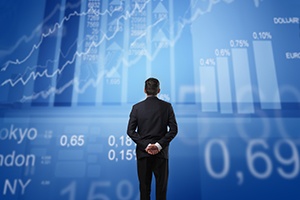 I have been wrestling with what to write about today. There’s not much to add that is new. The economy is doing well, and the data is coming in strong. Although the stock market is reacting to events in Washington, it is still within 1 percent of its all-time highs. From my beat, there is not a lot worth commenting on at the moment.
I have been wrestling with what to write about today. There’s not much to add that is new. The economy is doing well, and the data is coming in strong. Although the stock market is reacting to events in Washington, it is still within 1 percent of its all-time highs. From my beat, there is not a lot worth commenting on at the moment.
But this presents a good opportunity to step back and look at the bigger picture. The real question I have is this: what could take the current good conditions and make them less so? To answer this, I think there are three economic trends that bear watching.
1) Inflation
The world has been in a perfect storm of deflation. With globalization, we have seen an expansion of workforces; with the fracking revolution, we saw energy prices come down; with technology, we have seen all sorts of business and consumer costs decline. Over the past decade, no matter what central banks did, inflation just kept dropping.
It’s not dropping anymore. That doesn’t mean it will spike again. It does mean the trend is changing—and any expectations about investing and economics rooted in the experience of the past 10 years may change as well.
For example, what does it mean for bond returns if all investors get is a very low coupon payment? Not what they expected, perhaps. What does it mean if the Fed starts raising rates, rather than holding them steady? What does it mean if consumers and companies can no longer borrow whatever they want at low rates? What does it mean when all of that accumulated debt gets more expensive? This is a different world. We don’t need to see much of an increase to make things very different—and much more restrictive—than they have been.
2) The Deficit
The Republican tax bill now looks likely to pass. According to nonpartisan projections, the deficit will go up by $1 trillion over the next 10 years. This is on top of the already projected deficit of $10 trillion over the next decade. In other words, the national debt will go up by about half.
So, inevitably, will the debt service payments. These have been kept low with low interest rates. But with rates no longer declining, the burden of paying for that debt will get heavier, not lighter. At some point, that debt will have to be paid back. As such, either spending will have to come down (dramatically) or taxes will have to go up (substantially). This is not politics; it’s math.
The deficit has gone away as a public concern due to the success of the sequester spending cuts. The tax cuts will end that positive trend, and the continuing retirement of the baby boom generation will make it worse. The existing trend has changed. Expect to see the deficit back as a big issue sometime in the next five years.
3) Globalization
We have not seen the end of globalization, but we have seen the end of its golden age. The U.S. is disengaging (and it is not just President Trump); Europe continues to face challenges in Britain, Catalonia, Germany, and other countries; and China is rising globally, with Japan responding. Given all of this, the rise in trade that has tied the world together, cut costs, and created peace and prosperity looks likely to be hitting, at least, a pause. Again, this is a change in trend that we can see underway.
The Big Picture
The big picture is that three major tailwinds, which we have had for a decade or more, are in the process of at least subsiding and, possibly, turning into headwinds. Things are likely to stay good for a while—probably another year or so is my best guess. At the same time, we can see the weather changing.
There are good trends, with the movement of the millennials into their peak earning and spending years being one of the biggest. We need to focus on those as well. For the moment, however, with things as good as they are, the greater need is to keep an eye on the trends changing for the worse. So says Eeyore, anyway.


 Print
Print

